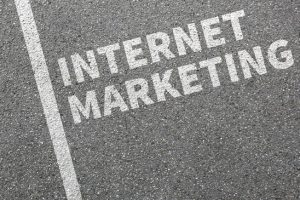 First of all let’s ask the question: “What is the purpose of a landing page?” A visitor will almost certainly arrive on a landing page having clicked a link on your website. The job of that landing page is to encourage your visitor to take further action, to make the “most wanted response” before leaving the page. It may be that you want them to subscribe to a free newsletter, download an e-book or make a purchase. Whatever action you wish them to make, the landing page must continue where the website link left off.
First of all let’s ask the question: “What is the purpose of a landing page?” A visitor will almost certainly arrive on a landing page having clicked a link on your website. The job of that landing page is to encourage your visitor to take further action, to make the “most wanted response” before leaving the page. It may be that you want them to subscribe to a free newsletter, download an e-book or make a purchase. Whatever action you wish them to make, the landing page must continue where the website link left off.
The appearance of the landing page must be in keeping with the topic which led your visitor to the landing page in the first place. It is quite likely that the website content which led them to your landing page conjured up in their minds an expectation of what they would find on the other side of the ‘Click’. Try not to disappoint them! If they arrive on a bland, featureless page with “Click Here” in the middle, what are your chances of getting your “most wanted response”? – Approximately zero I should think! On the other hand, you don’t want their first view of your landing page to leave them in a state of shock, – thinking that they have arrived in the middle of a Walt Disney movie. Overdoing the pictures and graphics will not help your conversion rate. There is a good case for making the landing page match your webpage with the same basic colour combinations, possibly a matching image or two and the same font, thus giving the feeling of having simply turned over the page of a book.
Once you have a visitor to the landing page you must get straight to the point, – but with subtlety. Don’t beat about the bush but provide more information immediately. Be concise and don’t use long sentences. If someone has clicked through from your webpage they are in a receptive frame of mind, – they have seen something to catch their interest and want to know more. What you write on the landing page must be very relevant and match what the visitor has already read on your webpage. Bullet points can be effective in giving information succinctly and in a form which is easily digestible.
Don’t confuse the issue by putting adverts or links to other products or services on your landing page. Keep your visitor, your potential customer, focussed on the one issue, your “most wanted response”. Don’t lead them down the garden path or you are likely to lose them. Use precise facts and figures in the way you present your offer rather than vague generalisations. Don’t just offer an unspecified bonus but quote an exact figure; – eg – “10% off” –“two for the price of one”, etc. Make sure that your choice of background colour and font make the page clear and readable; – black type on a white background is still the best option. It is your words which ultimately sell your product so ensure that your message is as readable as possible.
Some use of graphics can be helpful, a logo for instance if you have one, is always worth displaying as it does identify you and will, presumably, match the logo on your webpage. Don’t overdo the graphics and images, they must compliment not dominate the text. It is quite common these days to have a video presentation on your landing page which will cover much of the information that would traditionally be presented in your copy. If you use this approach then your copywriting should reflect this and add to what is said in the video rather than simply duplicating it in print.
The only navigation link on your landing page should be the link to achieve your “most wanted response”. Don’t cloud the issue; keep your visitor focussed. Keep your text personal too. You don’t have to be too chatty but avoid formality either in words or phrasing. As with advice commonly given for the writing of sales letters, use the words “you” and “your” in your copy, helping your visitors to see things from their own perspective, so they can come to undrestand the value and benefits of the product from their own point of view.
Vitally important on any landing page is a clear call to action. After all, that is why you drew your potential customer to the page in the first place. If you haven’t already done so on your webpage, ensure that there is an opt-in form to gather the information needed to move on to the next step and to add another subscriber to your list. When creating a landing page you are writing for the benefit of potential customers not to satisfy search engine optimisation. By the time you have brought someone so far, SEO becomes largely irrelevant. Remember, the landing page is trying to achieve one thing, and one thing only, to persuade your visitor to make your “most wanted response”.
